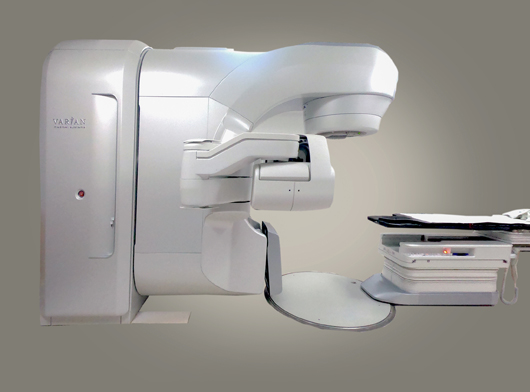Intensity-Modulated Radiation Therapy (IMRT) is one of the most advanced forms of radiation therapy available today. It is a type of treatment that uses computer-controlled linear accelerators to precisely target a tumor with radiation beams of varying intensities. In this blog post, we will discuss what IMRT is, its benefits, and who can benefit from this type of treatment. By the end of this post, you should have a better understanding of IMRT and how it can help you or a loved one.
For Those Who are Interested in Gaining More Info: michael dattoli md sarasota fl
What is IMRT?
IMRT is a type of radiation therapy that uses finely tuned X-rays to target and destroy cancer cells while minimizing exposure to radiation in nearby healthy tissue. It is often used for the treatment of tumors due to its precise targeting ability, increased patient safety, and improved therapeutic outcomes.
IMRT is an advanced form of 3D conformal radiotherapy that uses small radiation beams to treat cancerous and non-cancerous tumors. With IMRT, the beams are shaped more precisely than ever before to conform to each patient’s individual needs. The beams are directed from multiple angles at varying levels of intensity to accurately match the shape of the tumor, avoiding exposure and damage to organs, cells or tissue not affected by cancer.
IMRT is particularly valuable for targeting complex and concave shapes that are close to vital organs such as the lungs or heart, due to its highly precise nature. It uses powerful energy beams such as X-rays, protons, or other sources to kill cancer cells while sparing healthy ones, all while delivering customized doses tailored specifically for each patient’s needs.
Intensity-Modulated Radiation Therapy provides an exciting new option for treating various forms of cancer with fewer side effects than traditional radiotherapies have had in the past, making it an invaluable tool for doctors treating patients with this dangerous disease.
Preparing for and Using IMRT in Modern Treatment
IMRT is an essential element of contemporary cancer treatments. Utilizing innovative computer programs, IMRT directs the appropriate amount of radiation from varying angles toward cancer cells while sparing healthy tissue. Compared to traditional radiation treatments, IMRT is more effective as it can target tumors while reducing harm to healthy tissue.
Prior to undergoing IMRT, understanding the procedure’s advantages and potential risks is vital. IMRT produces higher doses of radiation with lower damage to healthy tissue. It is ideal for complex and concave target volumes that are situated close to organs at risk, thus reducing side effects (such as fatigue, skin irritation, and nausea) and improving the patient’s quality of life.
When considering an IMRT treatment plan, patients must account for their overall health status, any medical conditions that may be affected by external beam radiation delivery systems (EBRT), and having access to proper support during and after their recovery.
Overall, IMRT is one of the most popular methods of treating cancer as it delivers high doses with minimal side effects. Coupled with technological advancements in the field, IMRT has the potential to revolutionize modern cancer treatments even further.
See More Article: The Role of Radiation Oncology in Treating Pediatric Cancers
Benefits of IMRT and Who Can Benefit from Treatment?
Are you curious about Intensity Modulated Radiation Therapy (IMRT)? IMRT is an advanced form of radiation therapy used to treat cancerous and noncancerous tumors or conditions. In this section, we will explore the benefits of IMRT, how it works, who can benefit from it, potential dangers and side effects associated with its use, the cost of treatment, and more. Let’s get started!
What is Intensity Modulated Radiation Therapy (IMRT)? IMRT is a type of radiation therapy that shapes radiation intensity to the unique size and shape of a tumor. Using imaging technology such as CT scans or MRIs, doctors can map out the exact size and shape of a tumor in three dimensions. This allows them to accurately deliver higher doses of radiation with pinpoint accuracy while avoiding healthy organs and tissues.
The main benefits associated with the use of IMRT include increased effectiveness by delivering higher doses, reduced side effects due to avoiding healthy tissue, targeted delivery which minimizes damage to surrounding healthy tissue, and clinical trials available for exploring its benefits further.
So how does IMRT work?
It uses computer-controlled linear accelerators that deliver precise beams of high-energy X-rays or other particles directly into a tumor site at different angles around your body while accounting for movement during treatment sessions such as breathing or other bodily movements. This technique maximizes dose delivery while avoiding healthy organs in order to minimize side effects from treatment.
Who can benefit from Intensity Modulated Radiation Therapy? Patients who are diagnosed with cancerous or noncancerous tumors may be recommended for IMRT if their doctor believes it’s best for their condition. However, there are potential risks associated with this type of treatment, including skin irritation, fatigue, nausea/vomiting, etc. Therefore, it’s important to speak with your doctor before starting any course of treatment such as this one.
Finally, let’s discuss cost. The cost varies depending on where you receive your care but typically ranges between $3k-$6k per course depending on insurance coverage and other factors specific to each unique situation. So be sure to check about what costs might come up before beginning any sort of radiation therapy program like this one!
In conclusion, understanding Intensity Modulated Radiation Therapy (IMRT) is important when considering treatments for cancerous or noncancerous tumors/conditions, especially given all the potential risks and costs involved in undergoing any form of medical procedure like this one. Be sure to speak honestly and openly about these topics when speaking with your healthcare provider before making any decisions regarding treatments!
The Science Behind IMRT and its Alternatives
IMRT is an advanced type of radiation therapy that uses powerful energy beams to kill cancer cells. It has been used for decades and is a safe, effective way to treat many types of cancer. IMRT works by using advanced computer programs to calculate and deliver radiation from different angles, which helps the radiation dose conform to the shape of the target. This enables higher doses of radiation to be focused on the target while reducing exposure to other normal tissues. Common side effects associated with IMRT include fatigue, skin reactions at the treatment site, nausea/vomiting, hair loss in the treatment area or temporary changes in taste buds or smell due to high-dose radiations. There are different types of IMRT available, such as 3D conformal radiotherapy (3DCRT), volumetric modulated arc therapy (VMAT), etc., each having varying levels of intensity delivery techniques based on the patient’s needs and specific diagnosis.
Although IMRT is an extremely effective form of treating cancers, there are some alternatives available, such as Proton Therapy, which can reduce risks and negative effects caused by high-dose radiations and increase chances for a potential cure with fewer complications. Additionally, there are newer forms emerging, like Intraoperative Radiation Therapy (IORT), where the beam is targeted directly at the tumor during surgery, thus reducing the time and effort associated with regular therapy sessions.
Understanding IMRT enables us to make informed decisions regarding our healthcare options, particularly when battling life-threatening illnesses such as cancer, making it a viable option for those suffering from life-threatening infections.
To Wrap Things Up
IMRT is an advanced radiation therapy that offers many benefits. It is highly precise, allowing for safe and effective delivery of higher doses to the target area while sparing healthy tissue. It provides minimal side effects and improved therapeutic outcomes, as well as increased patient safety compared to traditional radiotherapies. Other forms of radiation treatment, such as Proton Therapy and Intraoperative Radiation Therapy (IORT), are also available. However, it is important to discuss all options with your doctor before making treatment decisions. With this information, you can better understand how IMRT can help in the fight against cancer.

